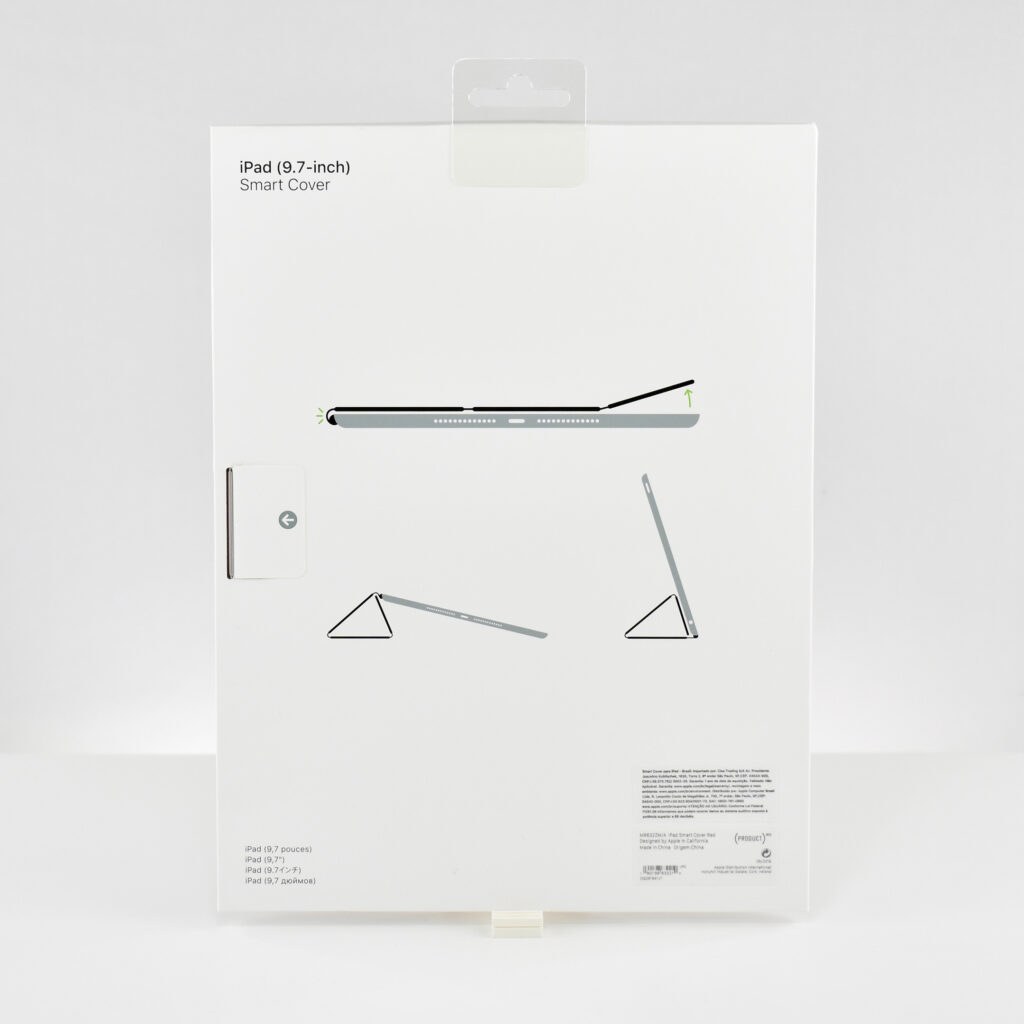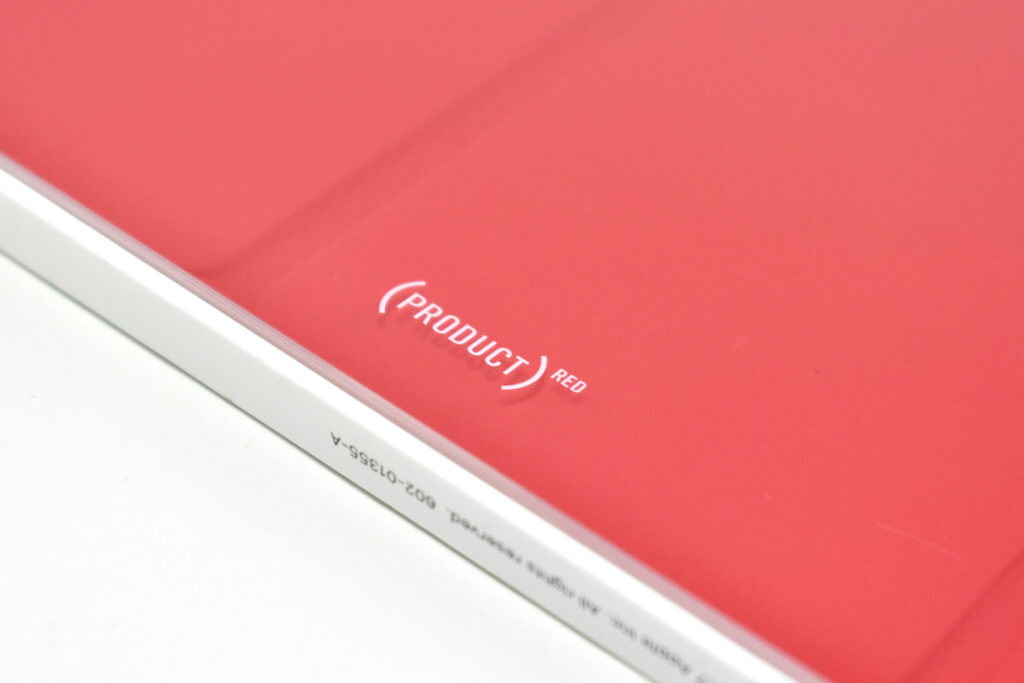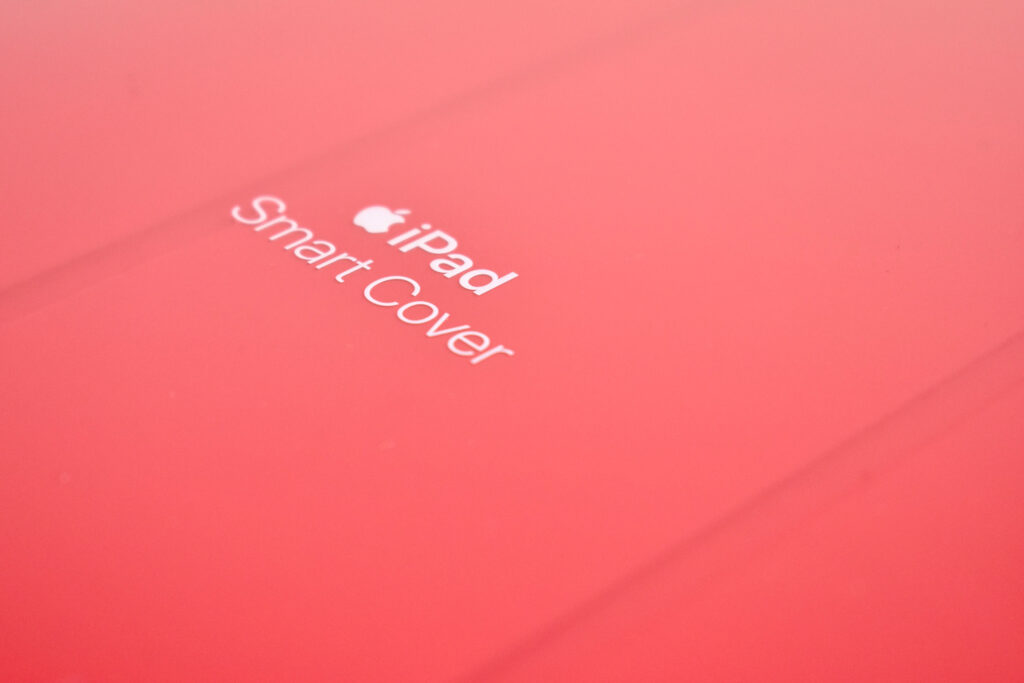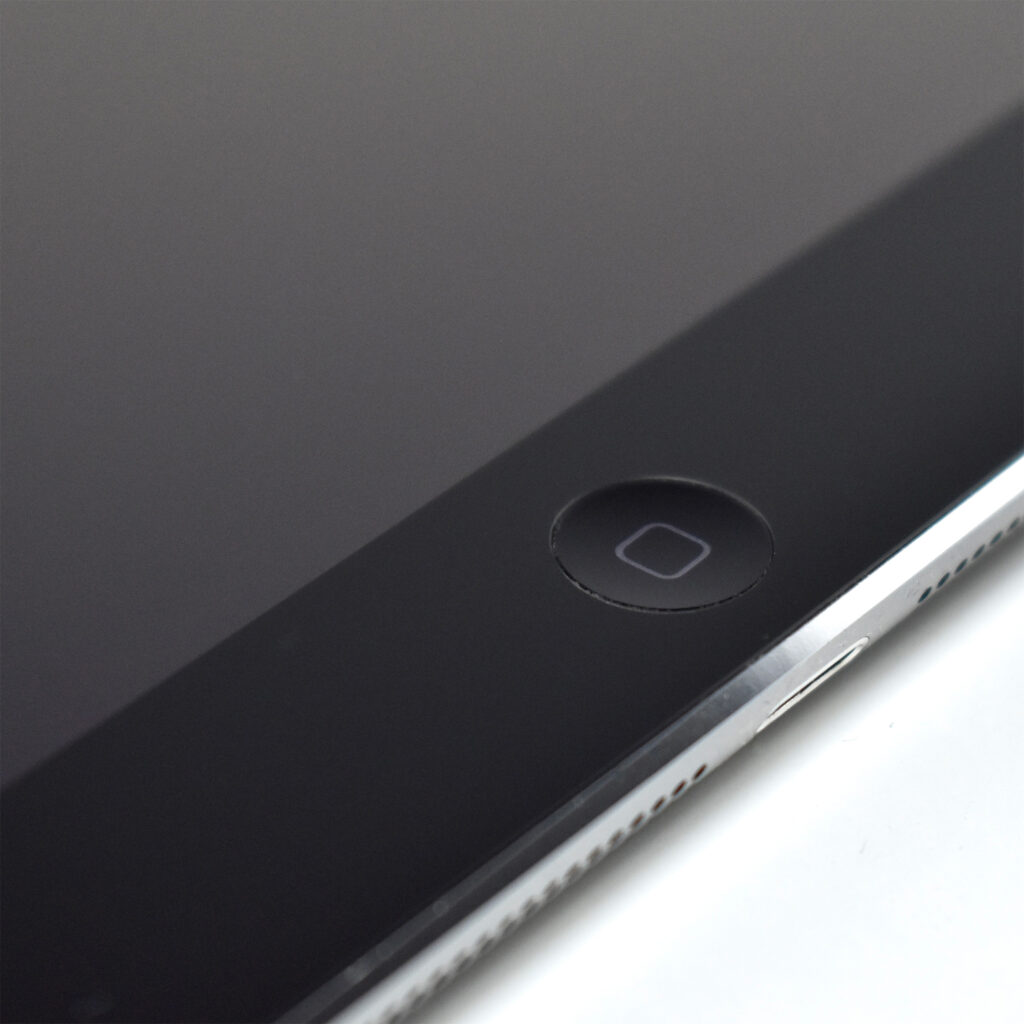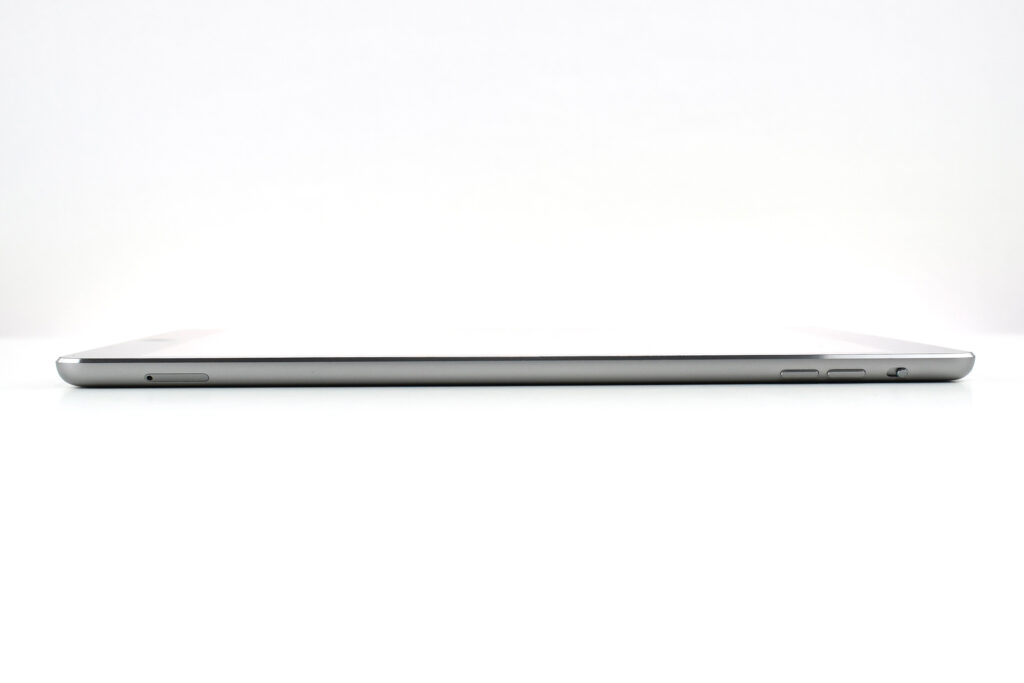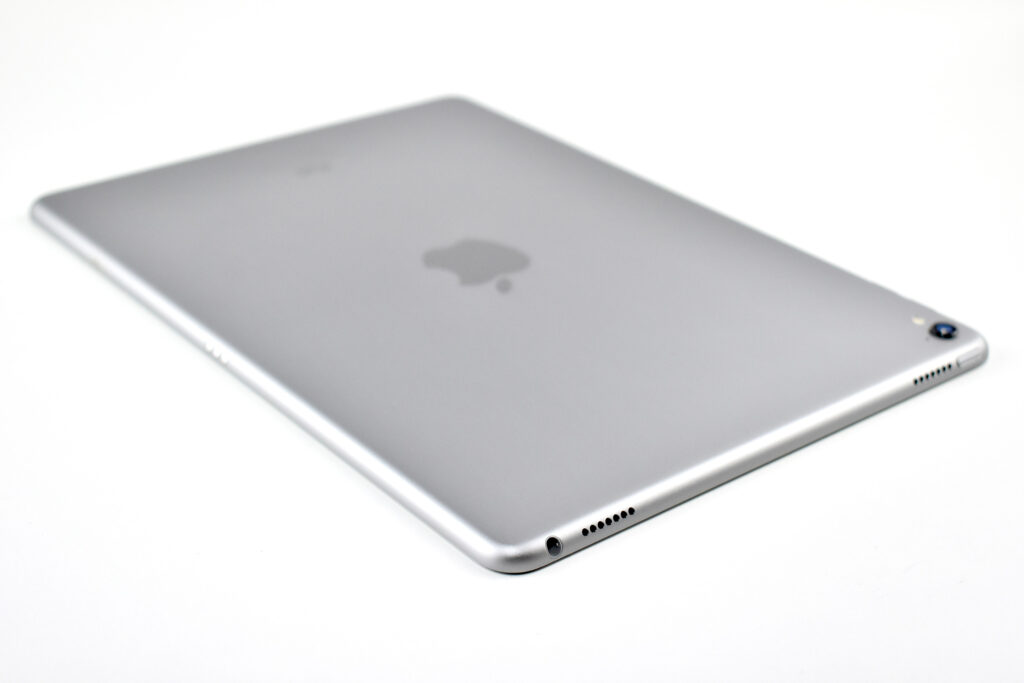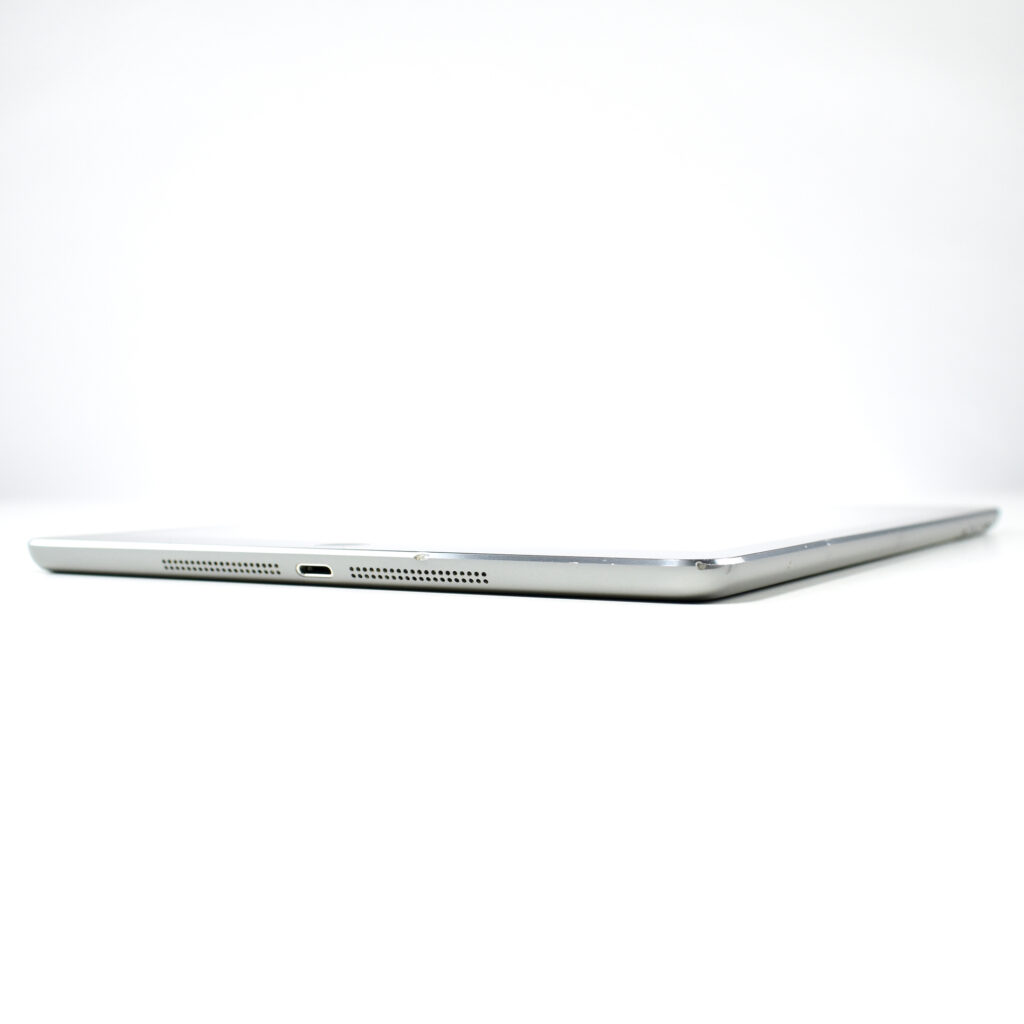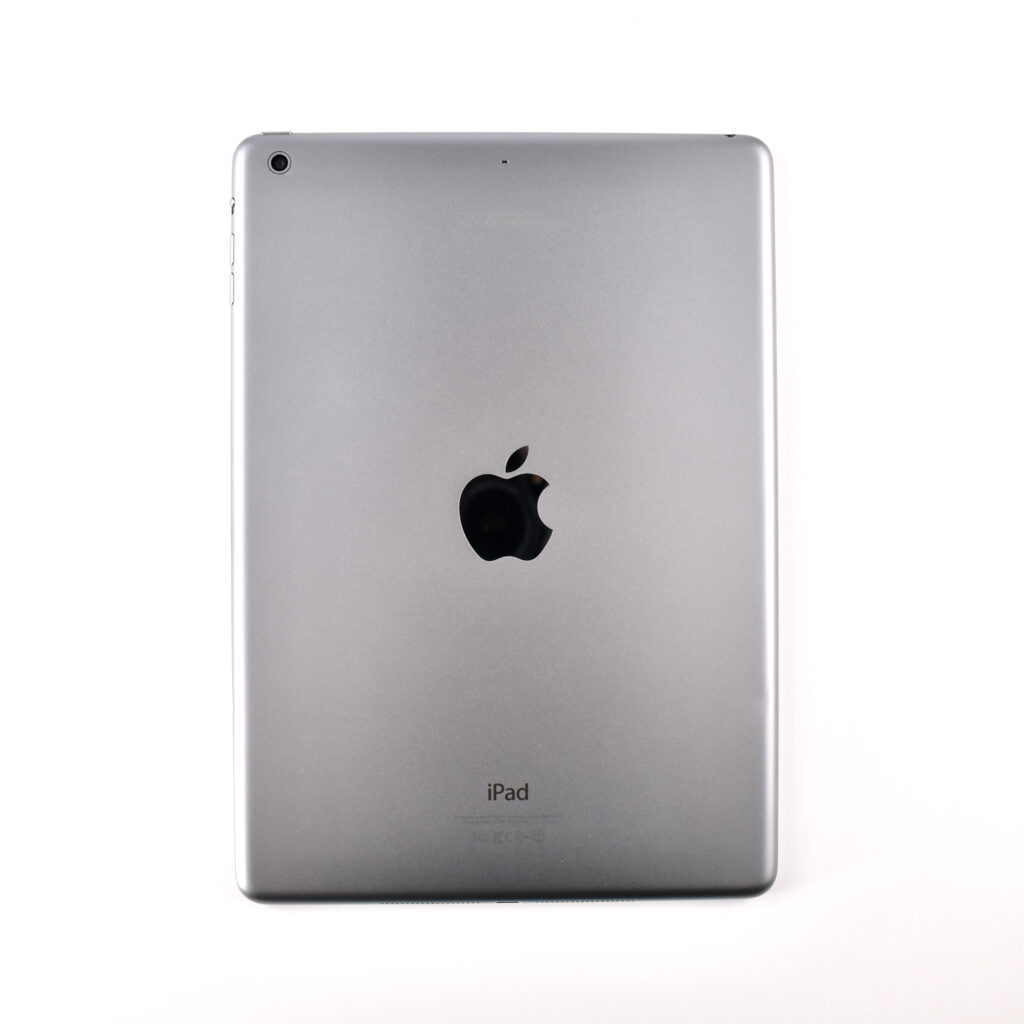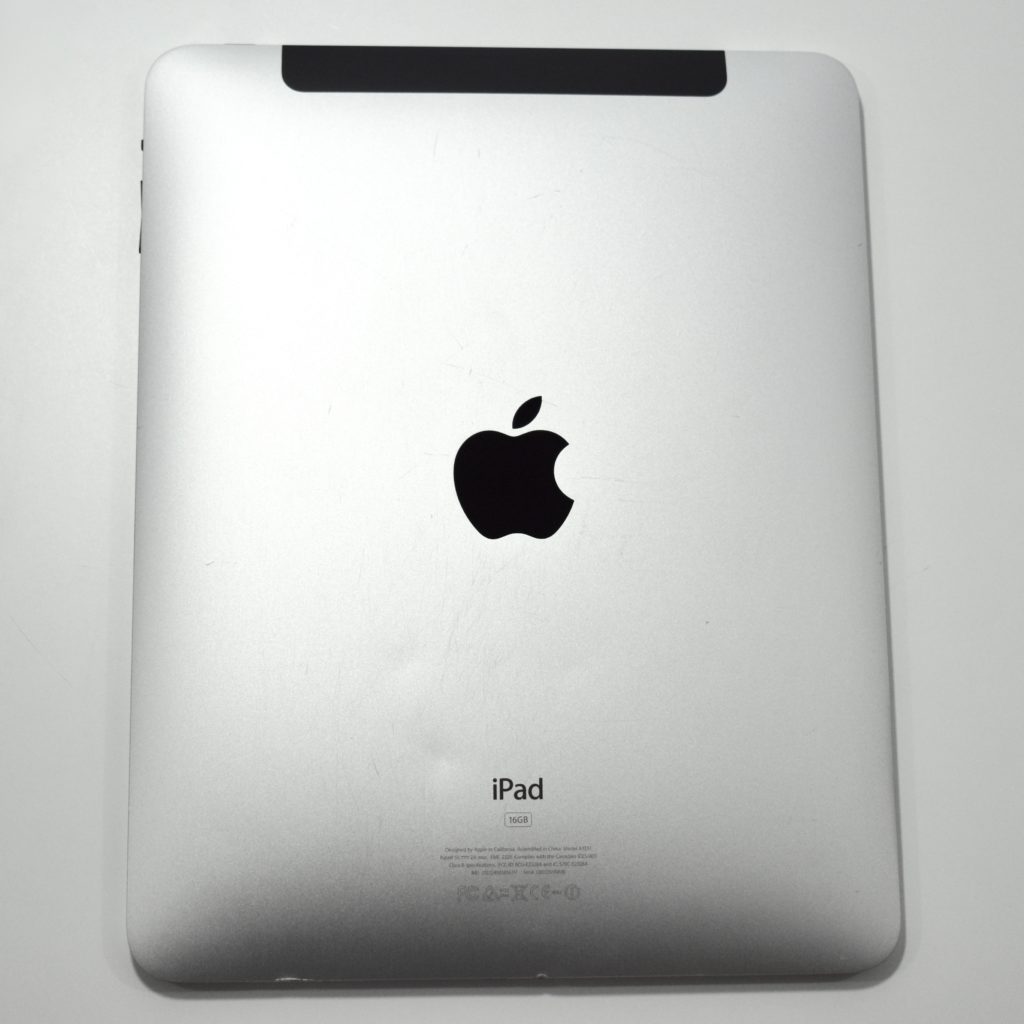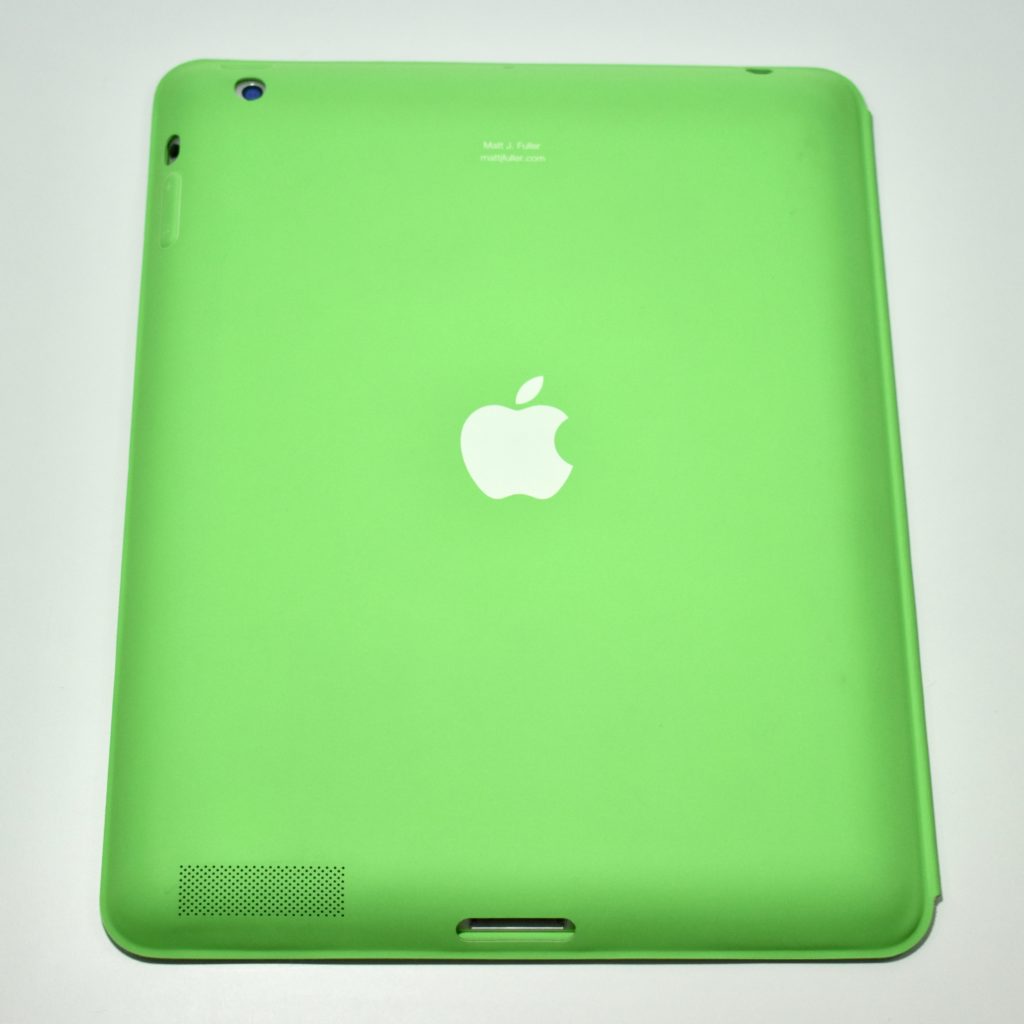Apple described the Smart Cover for 9.7-inch iPad:
“The Smart Cover for iPad is constructed from a single piece of polyurethane to protect the front of your device. It automatically wakes your iPad when opened and puts it to sleep when closed. You can easily fold the Smart Cover into different positions to create a stand for reading, viewing, typing, or making FaceTime calls. And it’s easy to remove, so you can snap it on and off whenever you want.”
iPad Smart Covers were first offered with the iPad 2 in 2011 and are still available as of 2023. All Smart Covers offer protection only for the front of the iPad, attach magnetically to the side, and use magnets to wake and sleep the device. Smart Covers use a 3-fold design that, when folded, allows the iPad to be used as a stand in two different positions.
This Smart Cover is compatible with iPad models including iPad Air 2, iPad Air (1st generation), iPad (6th generation), and iPad (5th generation). The color of this cover is (PRODUCT)RED.
According to Apple’s website, “Apple and (RED) are committed to fighting AIDS. In 16 years, we’ve contributed more than a quarter of a billion dollars, helping provide lifesaving treatments to people living with HIV.”
Source: Apple (Product), (PRODUCT)RED

